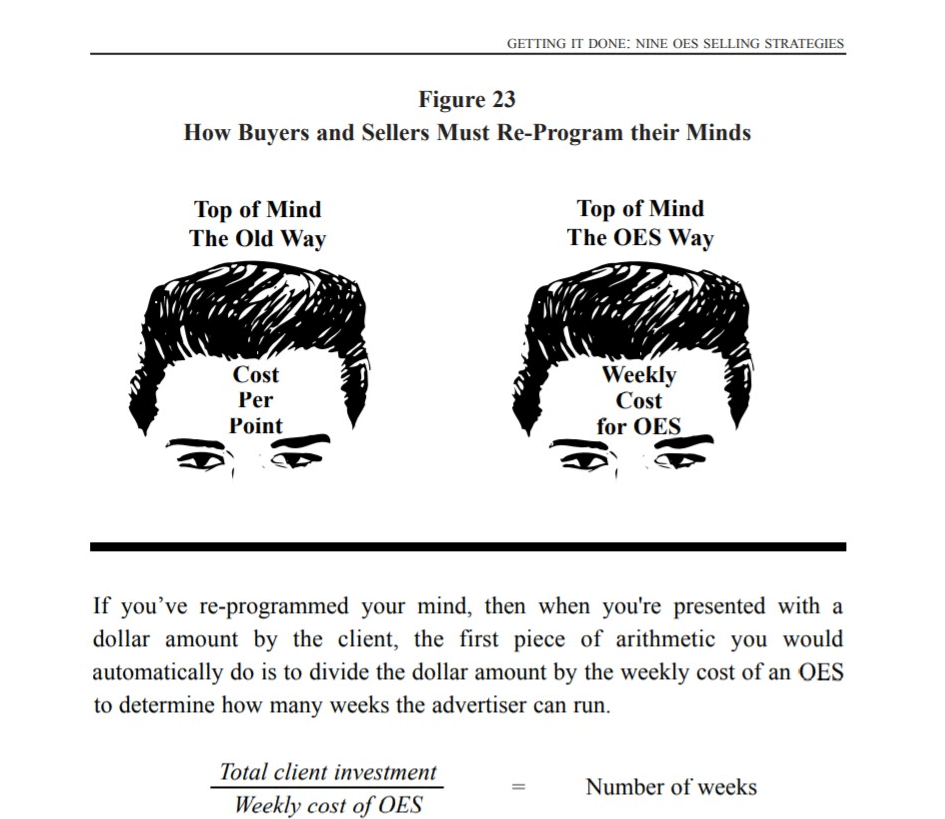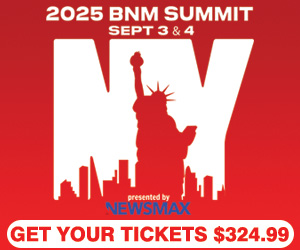How many Ads should I run?
Have you ever been asked that question?
Do you have a good answer?

I have heard a lot of answers over the years and mostly they adhere to the spray and pray philosophy in my opinion. At best, the schedules were successful for a certain station, but it was obvious that a one size fits all solution could not be applied to say 5 different stations in the same market. I was determined to get to the bottom of this equation and was fascinated that NOBODY had a scientific answer to that fundamental question.
Then I read the book Radio Advertising’s Missing Ingredient.
Optimum Effective Scheduling, otherwise known as OES. It changed how I sold radio and I saw the power of how it worked for clients. I asked Pierre Bouvard of Cumulus Media about OES and what his involvement was in developing it. I remembered Pierre writing extensively about the subject when he was with Arbitron, now Nielsen, and had assumed he came up with it. Pierre, who now serves as Chief Insights Officer and research guru, told me it was the late Steve Marx’s idea.
“Steve invented OES during his days with NewCity Communications,” Pierre said, “and after the NAB approached him to write a book, he asked me to co-author it with him because I had been popularizing the formula.”
Thousands of copies of the book were in the hands of agency people, radio salespeople and managers. The formula was so popular that the scheduling function of Tapscan had a special OES tab that would quickly calculate how many ads you needed to run for a specific station/daypart, etc.

Marx began running the OES schedules on the NewCity-owned stations and the rest is history. Katz radio/tv reps and Westinghouse had all studied the issue of scheduling commercials before Marx but had not put it all together. Optimum Effective Scheduling is based on research that tries to correct the fact that the vast majority of radio schedules either contain too few commercials or they’re spread over too long a period to generate enough frequency for a proper advertiser ROI. It still works today.
So, how does it work?
First, you must have some belief in Nielsen. For some of you, I realize you have just stopped reading this article.
Nielsen research isn’t perfect. But, it’s the best we have and applying it here is for the client’s best interest. I will be happy to provide more details about the fallacy behind GRPs, CPPs, average frequency and more, which are all identified in the book, but here is the simple formula. It provides schedules for light, medium and heavy situations. Here is the heavy formula for Grand Openings or clients with special offers that end “Sunday!”:
M-Sun 6a-12m Station cume for broad target demo (A 25-54, A 18+)
divided by
average quarter hour persons
= Station turnover.
Station turnover
x 3.3 (Katz Radio/TV reps, NAB/Coleman research and Westinghouse developed this #)
= number of spots to run per week M-Sun 6a-12m with guaranteed equal daypart distribution
If you have a High impact campaign that is over a few weeks per month, then double the station turnover. For a regular image awareness campaign just run the station turnover number each week.
That is it.

Top 40 or ALL SPORTS stations will likely have a higher turnover rate than ALL Spanish or news/talk, so will require more spots. Think convenience store vs library traffic. In and out vs stays for hours. Most weekly schedules are between 30-50 commercials. It is a different way of selling schedules that is based on something. And I do not mean based on how many spots you are being asked to sell. It is based on research and getting results. This formula helped me sell with confidence and it worked again, and again. Just remember what Pierre and Steve wrote years ago: The schedule is inexpensive if it works, and real expensive if it fails.
If you want more details on OES, just send me an email at jeffcaves54@gmail.com.
Jeff Caves is a sales columnist for BSM working in radio and digital sales for Cumulus Media in Dallas, Texas and Boise, Idaho. He is credited with helping launch, build, and develop Sports Radio The Ticket in Boise, into the market’s top sports radio station. During his 26 year stay at KTIK, Caves hosted drive time, programmed the station, and excelled as a top seller. You can reach him by email at jeffcaves54@gmail.com or find him on LinkedIn.



